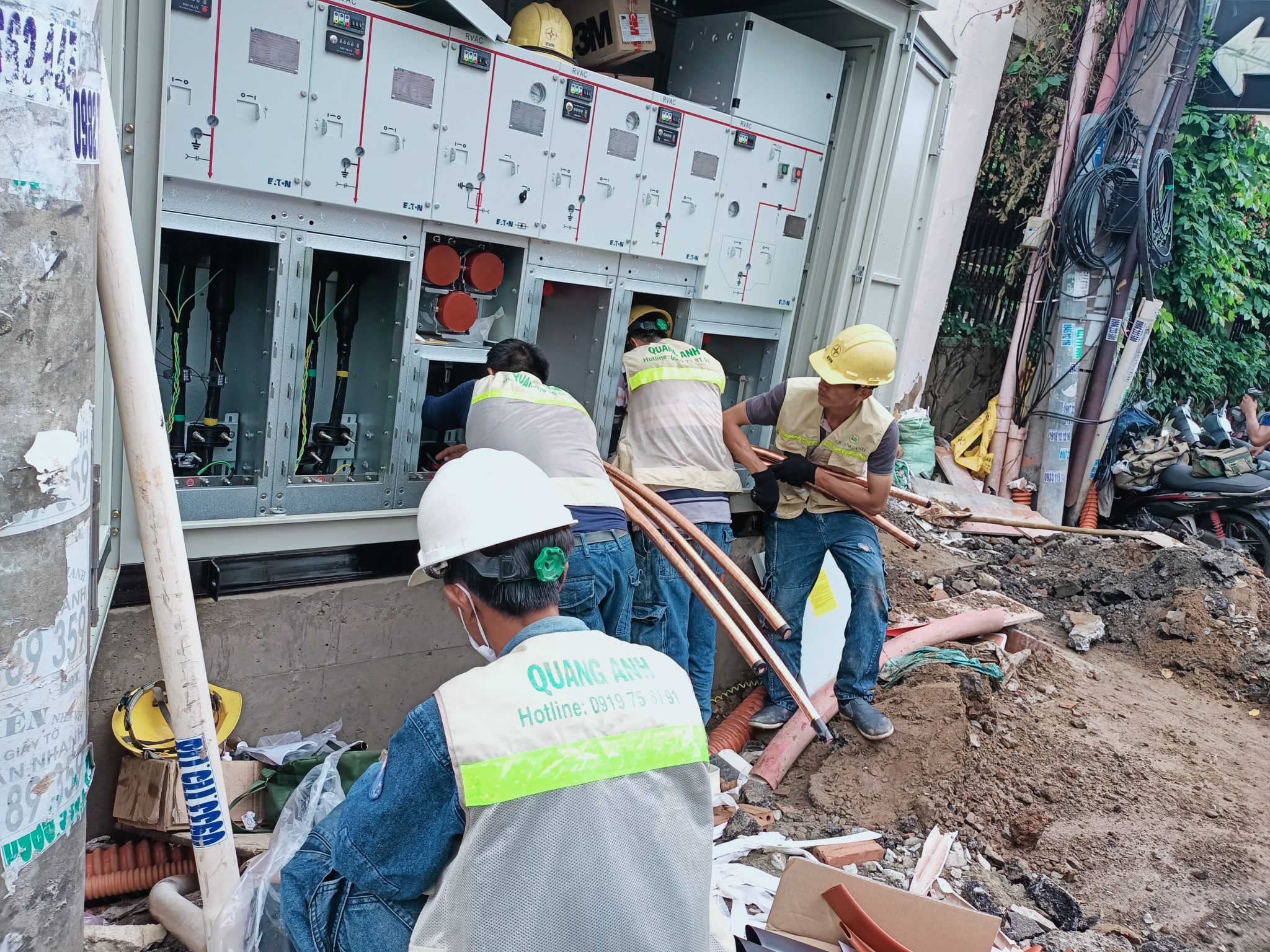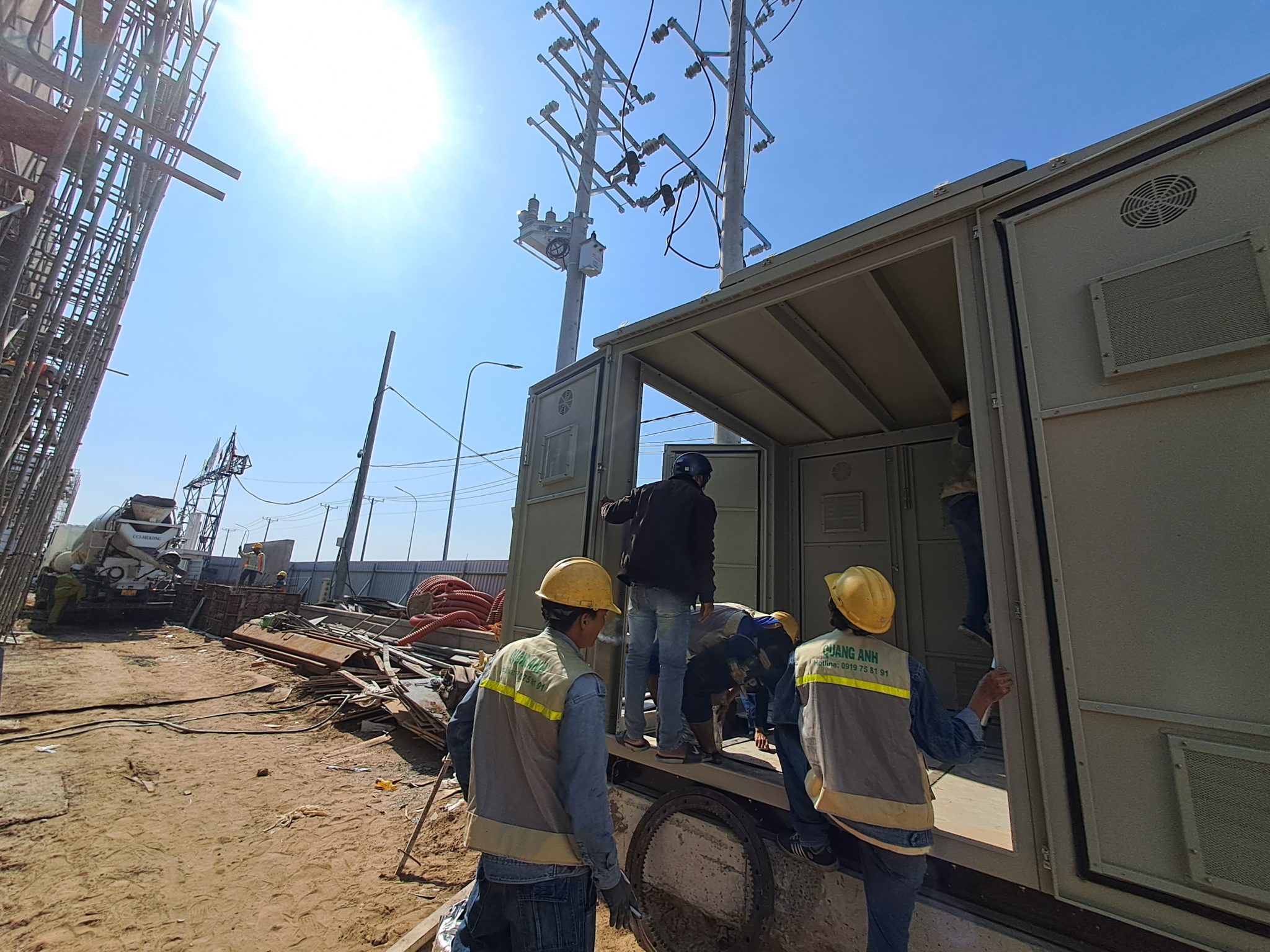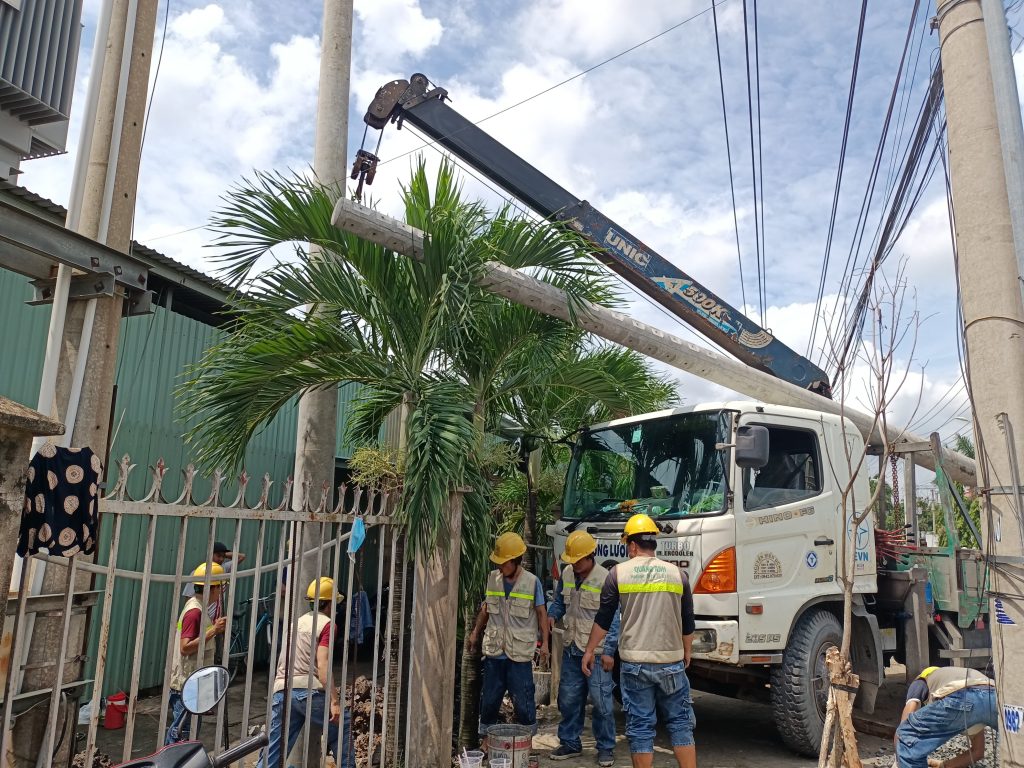News
Efficient and Safe Transformer Station Installation Process
Transformer Station Installation is a critical process in the field of power distribution. This process includes steps from site survey to testing and acceptance, ensuring safety and efficiency.
Detailed Construction and Installation Process of Transformer Station
The transformer station installation process includes steps: Surveying the installation site to ensure it meets technical requirements. Next, taking precise location markers for parts of the transformer station and the underground cable system. Digging foundations and installing protective conduits for cables to ensure safety. Then, installing the grounding system to prevent electrical incidents. Proceeding with the installation and connection of components for effective operation. Finally, testing and acceptance of the entire system.
- Survey and preparation before construction: Transformer station installation begins with a site survey to determine suitability and optimization with proposed technical planning. This process requires marking positions to locate pole foundations and cable systems. This step also includes digging the station foundation and underground cable trench, placing protective conduits, and restoring the ground.
- Foundation and infrastructure construction: Next is the stage of constructing the transformer station foundation, requiring precision according to the design drawings. The grounding system is an indispensable part of this process, ensuring electrical safety and equipment protection from lightning incidents.
- Assembly of frame, transformer station equipment: Components such as switches, operating seats, and insulators are assembled. The transformer is placed on the foundation using specialized lifting equipment to ensure accuracy and safety.
- Cable installation and connection: The construction process continues with trenching for cables, placing protective HDPE conduits, laying underground cables, and making precise connections to the overall electrical system. Warning signs and transformer station names are also installed.
- Testing, acceptance, and trial run: Testing and quality inspection of the electrical system is a critical step to ensure safety and performance. This is followed by acceptance and trial operation before official commissioning.
- Related procedures: Finally, coordinate with the regional electricity authority to complete the necessary procedures for connection and official operation.

Necessary Documentation for Transformer Station Installation
To proceed with the installation of a new transformer station, all necessary paperwork needs to be prepared. This includes the identity document of the representative signing the electricity purchase contract and the land use right certificate at the installation location. These documents ensure all activities comply with current laws and regulations.
To perform transformer station installation in compliance with legal requirements in Vietnam, fully prepared documentation is essential. Electrical Installation Documentation includes many important documents. First, a request form or official letter requesting electricity purchase clearly expressing the customer’s needs is required.
- Documents determining the location of electricity purchase: Confirm the location through a certified copy of the representative’s identity document, land use right certificate, or land lease contract.
- Documents determining the purpose of electricity use: In addition to the business registration certificate, documents related to the unit, such as an investment license, are also needed.
- Connection request documentation: Implemented according to the Ministry of Industry and Trade’s regulations, including sample documents and main equipment diagrams, technical documents, and expected completion time.
The transformer station installation process begins with submitting documentation to the regional Electricity Authority, followed by a practical survey on electricity usage needs. The transformer station design must comply with technical standards to ensure safety and efficiency. Simultaneously, negotiating the connection point and investment boundary between parties is also an important final content in the installation procedure.
Through each step, precisely adhering to all requirements in the transformer station installation process not only ensures legal compliance but also supports optimal and safe electricity connection.

Safety Requirements and Operational Inspection of Transformer Station
Ensuring safety is a vital factor in transformer station installation. A stringent grounding system must be established to prevent incidents. Inspecting and maintaining transformers and other equipment is necessary to ensure normal operation. Do not forget to maintain the underground cable trench to maintain a clean and safe environment.
Transformer station safety is a top priority when designing and operating, requiring strict compliance with labor safety and technical regulations.
General Principles on Labor Safety
The basic factors to ensure transformer station safety include:
- Training and supervision: Staff must be properly trained in electrical safety and operation, with supervision from specialized personnel to ensure safety processes.
- Protective equipment: Using helmets, protective clothing, safety harnesses, and voltage testers is mandatory. Construction tools need to be regularly checked to ensure absolute safety.
- Compliance with QCVN 01:2008/BCT: Measures such as isolation and electrical locking when working near live parts are crucial.
Design and Installation of Transformer Station
Location must be airy, dry, and ensure safety for surrounding structures. Electrical technical standards are strictly applied, with protective enclosures achieving IP54 or higher to prevent dust and water. Insulation must comply with TCVN 6306-11:2009 for explosion-proof transformers.
Periodic Operational Inspection
Ensure electrical safety inspection through measuring earthing resistance, inspecting the grounding system according to Circular 31/2014/TT-BCT. Transformer Station Maintenance includes checking insulating oil, contact wear, mechanical condition, and detecting oil leaks. Electrical testing periodically to ensure performance and safety.
Environmental Protection Regulations
Waste management complies with strict principles, prohibiting the discharge of insulating oil into the environment. The transportation process also complies with regulations on hazardous goods.
Related Legal Documents
Necessary legal regulations such as Circular 31/2014/TT-BCT and Circular 38/2019/TT-BCT lay the foundation for electrical safety and technical standards in the installation and operation of transformer stations.
Transformer station safety must not be neglected, requiring proper investment in training, maintenance, and compliance with legal regulations.

Proper technical installation of a transformer station not only ensures operational efficiency but also optimizes investment costs and long-term safety. A precise process supports a sustainable and reliable energy strategy.
For detailed consultation on transformer station installation, contact QuangAnhcons – Hotline: +84 9 1975 8191.
QuangAnhcons provides transformer station installation services with standard procedures, ensuring the highest safety and efficiency for your electrical system.

 Tiếng Việt
Tiếng Việt 简体中文
简体中文 Deutsch
Deutsch 日本語
日本語 한국어
한국어 ไทย
ไทย Русский
Русский Français
Français
